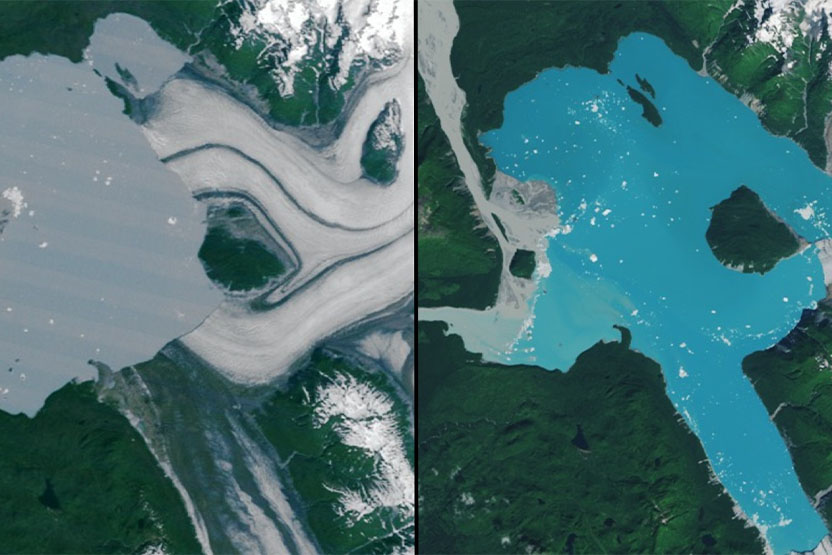
Along the coastal plain of southeastern Alaska, ice is giving way to water at an accelerating pace. Retreating glaciers are shrinking back, leaving behind expanding glacial lakes in their wake. Amid these changes, an entirely new island has emerged.
For decades, the Alsek Glacier wrapped around a small mountain known as Prow Knob, but this summer the glacier finally detached, leaving the rocky outcrop isolated. What is now a five-square-kilometer landmass is surrounded on all sides by the waters of Alsek Lake.
Satellite images taken over the years by Landsat 5 and Landsat 9 show just how dramatically the landscape has shifted between 1984 and 2025. In the mid-1980s, the glacier still extended to Gateway Knob, about five kilometers west of Prow Knob. By then, parts of the glacier’s edge had already receded, creating a shoreline around Prow Knob, though the ice remained connected to the northern arm of the Grand Plateau Glacier.
That connection weakened by 1999, as both glaciers retreated further. A northern tongue of the Alsek Glacier broke away from a narrow island, leaving the glacier more exposed to calving events. Over the next two decades, both northern and southern tributaries that once fed the Alsek Glacier with ice ceased to do so. As a result, Alsek Lake expanded southward, filling the void left by the retreating Grand Plateau Glacier.
This year, the final separation occurred. Between July 13 and August 6, satellite data confirmed that the ice had completely pulled back from Prow Knob, turning it into a standalone island. According to Mauri Pelto, a glaciologist at Nichols College who has studied the region since 1984, the Alsek Glacier has retreated more than five kilometers since then, and the trend is expected to continue.
Since 1984, Alsek Lake has grown from 45 to 75 square kilometers. Combined with neighboring Harlequin and Grand Plateau lakes, the total area of glacial lakes in the region has more than doubled over the same period.
Pelto noted that while he once predicted the detachment of Prow Knob by 2020, the ice clung to it a little longer. Now, with its separation complete, the Alsek Glacier is even less stable and more vulnerable to further breakups.
The new island is a stark reminder of how Alaska’s glaciers are reshaping the landscape as climate change accelerates their retreat.


Comment